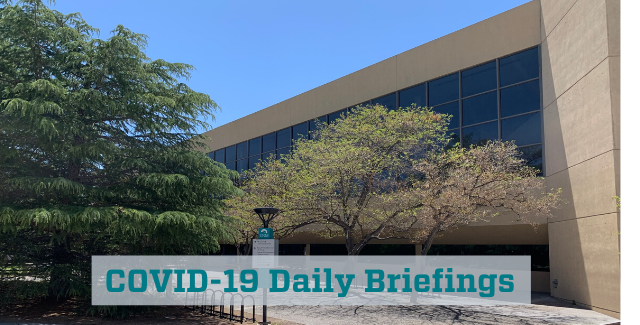Document Type
Brief
Publication Date
4-27-2020
Abstract
Executive Summary:
NM daily cases. McKinley surpasses Bernalillo cases. NM personal stories. Pushes for earlier reopening: Grants, Roosevelt, Lea, Albuquerque. Bus route reopening. Unpaid substitute teachers. Union nurse protest. Georgia reopening. CVS Walgreens LabCorp testing. WHO endorses federal plan. Australians embrace tracing. Brazil overwhelmed. Kawasaki disease elevated. Contamination simulations. Rice cooker mask steaming. Novel eye mask. 3 million worldwide cases. Contact tracing pitfalls. Malaria inverse relationship. Wastewater surveillance. Homeless testing. Predicting death rates. Urban informal settlements. Global health guide. Improving quarantine adherence. Practice guidelines: multiple myeloma, pediatric management, pediatric dialysis, PPE in oro/nasopharyngeal conditions. Recombinant ACE2 blocks virus. Viral life cycle targets. Addressing HCQ+azithromycin long QT. 43 clinical trials. Diabetes risk meta-analysis. Pancreatic damage risk. Nicotine protective hypothesis. High elevation lower risk.
Recommended Citation
Lambert, Christophe G.; Shawn Stoicu; Ingrid Hendrix; Lori D. Sloane; Todd Quinn; Anastasiya Nestsiarovich; Praveen Kumar; Nicolas Lauve; Ariel Hurwitz; LynnMarie Jarratt; Jenny Situ; Alexandra Yingling; Elly Munde; Cristian Bologa; Kristine Tollestrup; Orrin Myers; and Douglas J. Perkins. "2020-04-27 DAILY UNM GLOBAL HEALTH COVID-19 BRIEFING." (2020). https://digitalrepository.unm.edu/hsc_covid19_briefings/19


Comments
Disclaimer: The UNM Global Health COVID-19 Briefing is provided as a public service. Sources include not only peer-reviewed literature, but also preliminary research manuscripts that have not been peer reviewed along with lay news media reports. The peer-review process often results in manuscript improvement, with corrections made for errors and unsubstantiated conclusions being corrected. Furthermore, many headlines and summaries in the briefing are written by student volunteers and others who may lack subject matter expertise in this rapidly evolving field. As such, the headlines and summaries should not be regarded as conclusive. Instead, readers are encouraged to use the briefing to identify areas of interest and then use the embedded links to read and critically evaluate the primary sources.